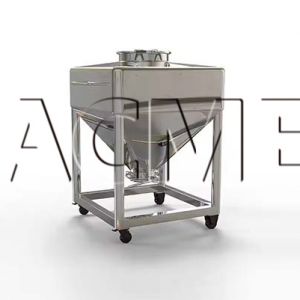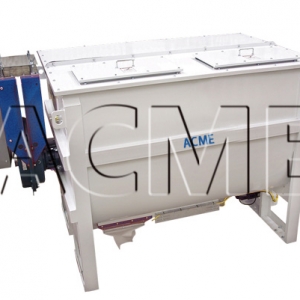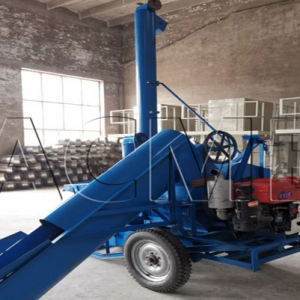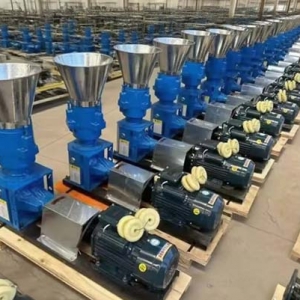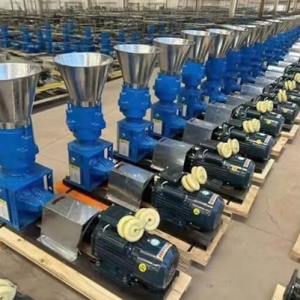In modern industrial production and commercial refrigeration, counter-flow air coolers have become the cooling equipment of choice across many industries thanks to their unique design and efficient cooling performance. This article will delve into the working principles, core functions, market position, and latest development trends of counter-flow air coolers, and demonstrate their application value in various fields through real-world cases and data.
Working principle and core functions of counter-flow air cooler
A counter-flow cooling tower is a highly efficient heat exchange device. Its core design concept is to maximize heat exchange efficiency by traversing air and water in opposite directions. Compared to traditional cross-flow cooling towers, this counter-flow design enables the cooler to achieve higher cooling performance in a smaller space, making it the backbone of modern industrial cooling systems.
Basic working principle
Counter-flow air coolers achieve efficient cooling through a carefully designed internal structure. The heat exchange process begins with hot water being evenly distributed from the top of the unit through a spray system, forming fine water droplets or a film of water. At the same time, air, driven by a powerful fan at the bottom, flows upward and directly contacts the falling water droplets. This counter current flow extends the contact time between air and water, achieving optimal evaporative cooling. During this contact process, a portion of the water evaporates, removing a large amount of heat. The remaining cooled water is collected in a water pan at the bottom and returned to the equipment to be cooled by a circulating pump, completing the cooling cycle.
Core functional advantages
Counterflow air coolers stand out among other cooling equipment thanks to several key advantages:
The "Experimental Study on the Cooling Performance of Tubular Indirect Evaporative Coolers for Data Centers" conducted by Professor Cao Jun's team at East China University of Science and Technology represents a cutting-edge application of counterflow cooling technology in data centers. As data center energy consumption becomes increasingly prominent, the high energy consumption of traditional mechanical refrigeration is becoming unsustainable. Counterflow indirect evaporative cooling offers a highly efficient and energy-efficient alternative.
1. Efficient heat exchange: The counterflow design maintains a maximum temperature difference between the hot and cold media. According to field data, counterflow cooling efficiency is 15-25% higher than traditional crossflow cooling, making it particularly suitable for industrial environments where cooling efficiency is critical.
2. Compact space utilization: Due to its high heat exchange efficiency, counterflow air coolers can occupy 20-30% less floor space than crossflow air coolers for the same cooling capacity. This feature makes them a distinct advantage in space-constrained factories or urban buildings.
3. Water-saving and environmentally friendly: Through optimized design, the water loss rate of modern counterflow air coolers has been reduced to 0.5-1.5% of the circulating water volume, far lower than the 3-5% of earlier models. Some high-end models also feature water recovery systems to further reduce water consumption.
4. Precise Temperature Control: Combined with an intelligent control system, the counterflow air cooler can maintain outlet water temperature within ±0.5°C of the set value, meeting the needs of temperature-sensitive industries such as precision manufacturing and data centers.
5. Low-Noise Operation: The latest generation of products, through improved fan blade design and the addition of sound-absorbing materials, keeps operating noise below 65 decibels, meeting urban environmental noise standards and broadening its application in commercial areas.
Key Components and Technologies
A high-performance counterflow air cooler is comprised of multiple precision components working in concert, each meticulously designed and optimized:1. High-efficiency fan system: Utilizes airfoil-shaped axial flow fans equipped with variable-frequency motors, automatically adjusting speed based on load, optimizing energy consumption. For example, the latest model of one brand's fan achieves an energy efficiency ratio of 25 m³/min/kW, an 18% improvement compared to five years ago.
2. Advanced filler materials: Modern counterflow air coolers use corrugated sheet fill made of PVC or PP, which boasts a large surface area (approximately 250 m²/m³) and a clog-resistant design, ensuring long-term, efficient operation.
3. Intelligent spray system: Utilizes pressure-type or rotary spray nozzles, coupled with flow sensors and electric control valves, to precisely match spray water volume to cooling load, avoiding energy waste.
4. Water treatment system: Built-in electronic anti-scaling and filtration systems effectively control scale and microbial growth, extending equipment life. For example, Jinhui Cooling's closed cooling tower utilizes a separate internal and external water circulation design, completely eliminating scale issues.
5. Intelligent Control System: An integrated PLC controller monitors parameters such as inlet and outlet water temperature, flow rate, and fan status in real time. Remote monitoring and predictive maintenance are also enabled through IoT technology.
Market position and application areas of counterflow air coolers
Counterflow air coolers have established an important position in the global cooling equipment market due to their excellent performance and reliability. According to the latest industry analysis data, the market share of counterflow air coolers in the global industrial cooling equipment market reached 38% in 2024 and is expected to grow to 42% by 2026, showing a strong development momentum. This growth is not only due to the expansion of demand in traditional industrial fields, but also due to the continuous expansion of emerging application scenarios.
Current status of industry applications
1. HVAC Systems: In the HVAC systems of commercial buildings and large public facilities, counterflow chillers have become a core component of central cooling systems. The China Telecom Group Building's air conditioning system renovation project employed six large counterflow cooling towers. Using CFD simulation to optimize airflow distribution, they successfully resolved the existing system's air mixing and backflow issues, improving overall cooling efficiency by 22% and saving approximately 1.5 million yuan in annual electricity costs. This case study exemplifies the exceptional performance of counterflow chillers in urban buildings.
2. Data Center Cooling: With the explosive growth of the digital economy, the demand for efficient cooling solutions in data centers has increased dramatically. The combination of counterflow chillers and indirect evaporative cooling technology has become a standard feature of the new generation of green data centers. Research by Professor Cao Jun's team at East China University of Science and Technology has shown that counterflow tubular indirect evaporative coolers can reduce PUE (power usage effectiveness) to below 1.25 in data center applications, achieving energy savings of 30-40% compared to traditional cooling methods. A zero-carbon park project in Fujian Province has even achieved zero-carbon operation in its data center cooling system through a combined "solar energy storage + counterflow cooling" system.
3. Manufacturing Applications: In industries such as plastic injection molding, metal processing, and chemical production, counterflow chillers are crucial for ensuring stable operation of production equipment. In particular, in temperature-sensitive precision manufacturing processes such as semiconductor production and the pharmaceutical industry, the stable cooling water (temperature fluctuation of ±0.5°C) provided by counterflow chillers is crucial for ensuring product quality. Jinhui Cooling's case study demonstrates that its closed counterflow cooling water towers have successfully resolved scale clogging issues in production equipment such as injection molding machines, reducing equipment shutdown rates by 90% and increasing production efficiency by 15%.
4. New Energy Industry: With the acceleration of the global energy transition, counterflow chillers have found new growth opportunities in new energy sectors such as photovoltaic manufacturing and lithium battery production. CATL has implemented a large-scale counterflow cooling system in its industrial park. This not only meets the cooling needs of the production process but also achieves energy cascade utilization through heat recovery, reducing energy consumption per unit product by 12%.
Regional market characteristics
From a regional perspective, the application of counterflow chillers exhibits distinct regional characteristics:
1. Asian Market: Emerging economies, represented by China, are the fastest-growing region. Driven by industrial upgrading and green building policies, China's counterflow chiller market will achieve a compound annual growth rate of 9.7% from 2020 to 2024, significantly exceeding the global average of 6.2%. Coastal regions such as Fujian have developed corrosion-resistant counterflow cooling equipment to address the local high-humidity and high-salt environments, expanding its application range.
2. European and American Markets: Mature markets prioritize energy efficiency and intelligent equipment. The Ecodesign regulations implemented in Europe in 2023 raise the minimum energy efficiency standard for counterflow chillers by 8%, driving the adoption of high-efficiency models. The US market prioritizes water conservation, with arid regions like California requiring mandatory water recovery systems.
3. Middle Eastern Market: The hot, dry climate significantly enhances evaporative cooling, leading to widespread use of counterflow chillers in the petrochemical and power industries. After a Dubai refinery adopted counterflow chillers, its peak cooling capacity in summer increased by 25%, meeting production needs in extreme climates.
Competitive landscape and leading brands
The counterflow air cooler market has developed a multi-tiered competitive landscape:
1. International Brands: Companies such as SPX Cooling Technologies from the United States, GEA from Germany, and EBARA Manufacturing from Japan, with their long histories and core technologies, dominate the high-end market. These brands' products are renowned for their high reliability and advanced control technology, but prices are typically 30-50% higher than domestic brands.
2. Chinese Domestic Brands: Taiwanese companies such as Jinhui Cooling and Liangji, as well as mainland Chinese companies such as EBARA Cooling and Zhongling, have established strong competitiveness in the mid-to-high-end market through continuous technological innovation and localized service. In particular, Jinhui Cooling's seventh-generation closed counterflow cooling water tower, featuring a modular design and reusable ABS heat sinks, surpasses some international brands in terms of ease of maintenance and longevity.
3. Emerging Innovators: A number of startups are exploring the integration of new technologies such as the Internet of Things and AI with traditional counterflow cooling technology to develop intelligent cooling solutions. For example, a Shenzhen company has launched an AI-powered air cooler that uses machine learning to optimize operating parameters, claiming to save an additional 10-15% in energy.
4. It's worth noting that with stricter environmental regulations and rising energy prices, energy efficiency has become a primary consideration for users choosing counterflow air coolers. A 2024 industry survey revealed that 67% of purchasing decisions prioritize "lifecycle cost" over "initial price," favoring technologically advanced, high-efficiency products to command a premium.
Technological innovation and development trend of counterflow air coolers
As global attention to energy efficiency and environmental sustainability continues to increase, counterflow chiller technology is experiencing an unprecedented wave of innovation. Between 2020 and 2025, a number of breakthrough technologies have emerged in this field, which not only significantly improved equipment performance but also expanded the application boundaries, making counterflow chillers evolve from simple cooling devices to an important part of smart energy systems. These innovations are driving the industry towards a more efficient, smarter and more environmentally friendly direction.
Material and design innovation
1. High-efficiency heat transfer filler: As the core component of heat exchange in counterflow coolers, the performance of the filler directly impacts overall efficiency. In recent years, the emergence of three-dimensional corrugated filler and cross-twill filler has increased specific surface area by 20-30% while reducing pressure drop by 15%. In particular, the ABS heat sinks used by Jinhui Cooling not only have a high heat transfer coefficient but are also reusable, reducing replacement costs and waste generation. A research team at East China University of Science and Technology has developed a biomimetic filler that mimics the surface microstructure of lotus leaves, exhibiting self-cleaning properties and demonstrating significant anti-scaling advantages in chemical industry applications.
2. Structural Optimization: The widespread application of computational fluid dynamics (CFD) technology has enabled more scientific and precise structural design of counterflow coolers. In the China Telecom Group Building air conditioning system renovation project, engineers used CFD simulations to analyze 15 different operating conditions, optimizing the cooling tower's airflow distribution and successfully addressing air mixing and backflow issues, resulting in an 18% increase in heat dissipation. Modern design also emphasizes modularity. For example, Jinhui's SCT series features a detachable structure, reducing maintenance time by 40%.
3. Improved weather resistance: Manufacturers have developed specialized models for different climates. Counterflow air coolers used in coastal Fujian Province feature 304 stainless steel construction and a special anti-corrosion coating to withstand high salt spray environments; models for the Middle East have enhanced dust and sand protection. Jinhui Cooling's narrow-alley design is particularly well-suited to the uneven plots and narrow spaces of Taiwanese factories, improving site utilization.
Intelligent control and system integration
1. AI Optimization and Control: The application of artificial intelligence technology in counterflow chillers has become a new industry trend. Ankerui's EMS3.0 energy management system, integrated with an LSTM neural network algorithm, can predict cooling loads within 96 hours and dynamically adjust fan speed and spray water volume, resulting in energy savings of 36.7% at a Xiamen manufacturing park. Haier Air Conditioning showcased its research findings at the 2024 China Home Appliance Technology Conference. Its temperature control algorithm, based on big data analysis, can learn from user habits and optimize cooling system operating modes.
2. Digital Twin Technology: Leading companies are beginning to build digital twin models of counterflow chillers, synchronizing the operating status of physical equipment in real time for performance analysis, fault prediction, and optimized control. Professor Cao Jun's team developed a "Data Center Cooling Load Prediction Model" that combines a CNN-LSTM-attention mechanism, achieving a prediction accuracy of 95%, providing a reliable basis for intelligent scheduling of counterflow cooling systems.
3. Multi-energy Complementary Systems: Counterflow chillers no longer operate in isolation but are now deeply integrated with photovoltaic, energy storage, and other systems. In the Fujian Zero Carbon Park project, a counterflow cooling system, 10MW rooftop photovoltaics, and 2MWh of energy storage form a microgrid. Through a "photovoltaic priority power supply + midday forced discharge" strategy, renewable energy meets 82% of cooling needs. This integration significantly reduces carbon emissions. In one case, the carbon intensity per unit of output value dropped from 0.8kgCO₂/kWh to 0.3kgCO₂/kWh.
Green and environmentally friendly technology
1. Scale-Free Technology: Scale is a chronic problem in traditional cooling systems. The new counterflow air cooler addresses this issue through various innovations. Jinhui's closed cooling tower utilizes a design with separated internal and external water circulation. The internal water circulation is completely sealed and isolated from the outside world, fundamentally eliminating scale formation. Furthermore, the external water circulation is equipped with an electronic anti-scaling device, effectively slowing down scale formation. Tests have shown that this design eliminates production equipment trips caused by scale blockage and extends equipment life by over 30%.
2. Low-Noise Design: Urban environments are increasingly demanding on equipment noise levels. Counterflow air coolers utilize multiple technologies to achieve silent operation. Jinhui's seventh-generation product utilizes a low-noise airfoil fan and a muffler, keeping operating noise levels below 65 decibels. Haier's "Net Energy Saving Pro" air conditioner utilizes an optimized air duct design, achieving a nighttime noise level as low as 22 decibels, making it suitable for noise-sensitive environments.
3. Water Conservation and Heat Recovery: Water consumption in cooling systems is of particular concern in water-scarce regions. Modern counterflow air coolers reduce water loss to less than 0.001% of the circulating water volume by optimizing the spray system and adding a water collector. More forward-looking designs are beginning to try heat recovery, using waste heat for building heating or process preheating. For example, CO₂ injection dual-temperature refrigeration systems can provide cooling and heating at the same time.
Future Development Direction
Based on current technological evolution and market demand, counterflow chillers are likely to exhibit the following future development trends:
1. Full Lifecycle Intelligence: From CFD simulation and digital twins in the design phase, to smart factories in the manufacturing phase, and finally to AI optimization and predictive maintenance in the operational phase, intelligence will permeate the entire equipment lifecycle. Professor Cao Jun's team's research on "Data Center Cooling Load Forecasting Based on a Convolutional Neural Network-Long Short-Term Memory-Attention Mechanism Model" represents cutting-edge exploration in this direction.
2. Carbon Neutrality Solutions: As the global carbon neutrality movement accelerates, counterflow chillers will increasingly prioritize integration with renewable energy and explore new technologies such as carbon capture. The practice of the Fujian Zero Carbon Park demonstrates that the "solar energy storage + counterflow cooling" model can significantly reduce carbon intensity and may become an industry standard in the future.
3. Interdisciplinary Technology Integration: Breakthroughs in new materials science, micro-nanotechnology, biotechnology, and other fields will revolutionize counterflow chillers. For example, thermal management lessons learned from fuel cell technology could be applied to cooling system design to further improve efficiency.
4. Service Model Innovation: Equipment manufacturers are shifting from being mere product suppliers to becoming service providers, offering comprehensive energy efficiency solutions through new models like Cooling as a Service (CaaS). Jinhui Cooling has begun providing one-stop services, from model selection advice, partial customization, planning and engineering, to after-sales training.
These technological innovations and development trends together paint a picture of the future of the counterflow chiller industry: a more efficient, intelligent, and green cooling solution ecosystem that will provide sustainable temperature management support for industrial production and commercial activities worldwide.
Practical application case analysis of counterflow air cooler
Theoretical advantages must be verified in practice. The successful application cases of counterflow air coolers around the world fully demonstrate their technological advancement and commercial value. This chapter will deeply analyze several representative practical application cases, using real data and operational results to demonstrate the excellent performance of counterflow air coolers in different scenarios. These cases are all from projects implemented in the past five years. The data is reliable and timely, providing valuable reference experience for potential users.
China Telecom Group Building Air Conditioning System Renovation Project
The air conditioning system upgrade project at the China Telecom Group Building is a prime example of the successful application of counterflow chillers in urban commercial buildings. According to the "China Telecom Group Building Air Conditioning System Diagnosis, Test, Analysis, and Evaluation Report," the existing cooling system suffered from severe air mixing and backflow issues, which compromised cooling efficiency and threatened the safe operation of the air conditioning system.
The project team selected six large counterflow cooling towers as a solution and used computational fluid dynamics (CFD) technology to simulate airflow distribution under 15 different operating conditions. The simulation results showed that optimizing the deflector angle and fan configuration effectively reduced air short-circuiting and improved heat exchange efficiency.
The actual operational data after the renovation is impressive:
1. Improved Cooling Efficiency: The system's overall heat dissipation increased by 22%, boosting chiller efficiency by 18%.
2. Reduced Energy Consumption: Annual electricity bill savings of approximately 1.5 million RMB, with a payback period of only 2.3 years.
3. Space Utilization: The counterflow design saves 25% of roof space compared to the original crossflow cooling tower.
4. Reliable Operation: No air conditioning outages due to cooling system failures have occurred in the three years of operation.
The successful application of CFD technology in this project is particularly noteworthy. Through digital simulation, engineers accurately predicted the effects of various design options before the actual renovation, avoiding the cost of trial and error. This provides new insights for cooling system renovations in large buildings.
Fujian Zero Carbon Park Solar Storage and Cooling Integrated Project
Against the backdrop of Fujian Province's policy push to develop zero-carbon industrial parks, the deep integration of a counterflow cooling system with renewable energy in an industrial park is groundbreaking. This project addresses Fujian Province's policy goals of achieving a renewable energy penetration rate of ≥30% and a 20% reduction in carbon emissions per unit of output by 2025. The project utilizes a hybrid system combining photovoltaics, energy storage, and counterflow cooling.
Project Key Data:
1. PV Capacity: 10MW rooftop PV array
2. Energy Storage Configuration: 2MWh lithium iron phosphate battery energy storage system
3. Cooling System: Three large, closed counterflow cooling towers with a total cooling capacity of 800RT
4. Intelligent Control: Coordinated by the Ankerui EMS 3.0 Energy Management Platform
The system utilizes a "PV-first power supply + midday forced discharge" strategy to address the time mismatch between photovoltaic power generation and cooling loads. Achievements after one year of operation include:
1. Energy Indicators: The cooling system's renewable energy penetration rate reached 82%, far exceeding the policy requirement of 30%.
2. Carbon Emissions: Carbon intensity per unit of output value decreased from 0.8kgCO₂/kWh to 0.3kgCO₂/kWh, a 62.5% reduction.
3. Economic Benefits: Through peak-valley arbitrage and demand-charge management, annual electricity bill savings reached 2.2 million yuan.
4. Expansion Savings: Energy storage peak shaving delayed the need for transformer expansion, saving 2 million yuan per unit.
The successful implementation of this project demonstrates that the deep integration of counterflow chillers with modern energy technologies is not only feasible but also economically beneficial, providing a replicable technical path for the development of zero-carbon industrial parks.
Application of Jinhui closed countercurrent cooling tower in plastics industry
Taiwan Jinhui Cooling Machinery Co., Ltd.'s closed counterflow cooling towers in the plastics injection molding industry are a prime example of how specialized designs can address industry pain points. In plastics processing, mold temperature control is crucial to product quality, but scaling problems in traditional open cooling towers often lead to reduced equipment efficiency and unplanned downtime.
Jinhui's solution utilizes an innovative, sealed design. Key features include:
1. Dual-Circulation System: The internal water circulation system is completely enclosed and dedicated to equipment cooling; the external water circulation system sprays the heat exchanger, preventing mixing of internal and external water.
2. Anti-Scale Technology: Equipped with an electronic anti-scale device and reusable ABS heat sinks.
3. Intelligent Control: Real-time monitoring of parameters such as water temperature and flow rate, automatically adjusting operating conditions.
Operational data from a large injection molding plant after implementing this system:
1. Production Efficiency: Equipment trip rate reduced by 90%, increasing production efficiency by 15%.
2. Maintenance Costs: Cooling system maintenance frequency reduced from once a month to twice a year, reducing maintenance costs by 70%.
3. Energy Efficiency: Overall energy consumption decreased by 18%, saving approximately NT$800,000 in electricity costs annually.
4. Water Quality Management: After three years of operation, the internal circulation system remains free of visible scale, and heat exchange efficiency maintains initial levels.
The Jinhui case study highlights the importance of professional design. In response to the scale pain point in the plastics industry, the closed counterflow cooling tower provides a fundamental solution, which not only improves production efficiency but also significantly reduces maintenance costs, demonstrating the adaptability of counterflow technology in different industries.
Data Center Cooling Research Project at East China University of Science and Technology
The "Experimental Study on the Cooling Performance of Tubular Indirect Evaporative Coolers for Data Centers" conducted by Professor Cao Jun's team at East China University of Science and Technology represents a cutting-edge application of counterflow cooling technology in data centers. As data center energy consumption becomes increasingly prominent, the high energy consumption of traditional mechanical refrigeration is becoming unsustainable. Counterflow indirect evaporative cooling offers a highly efficient and energy-efficient alternative.
Features of the system developed by the research team:
1. Counterflow design: Air and water flow in opposite directions, maximizing heat exchange efficiency.
2. Tubular structure: Avoids direct contact between air and water, maintaining water quality.
3. Intelligent prediction: A cooling load prediction model based on the CNN-LSTM-attention mechanism.
Experimental data shows:
1. Energy efficiency: The system's power usage effectiveness (PUE) dropped below 1.25, achieving 30-40% energy savings compared to traditional cooling methods.
2. Temperature control accuracy: Outlet water temperature fluctuations were controlled within ±0.5°C, meeting server cooling requirements.
3. Prediction accuracy: The cooling load prediction model achieved 95% accuracy, providing a reliable basis for dynamic adjustment.
This study not only validated the applicability of counterflow cooling in data centers but also, through the introduction of AI technology, demonstrated the enormous potential of intelligent cooling management. Another study by Cao Jun's team, "Energy-saving Operation Analysis of an Indirect Evaporative Cooling Hybrid Air Conditioning System in a Data Center," further indicates that a properly designed hybrid system can achieve an additional 15-20% energy savings.
These cases demonstrate the broad adaptability and significant benefits of counterflow air cooler technology. Whether in traditional industries or the emerging digital economy, in urban buildings or remote industrial parks, the counterflow design provides efficient and reliable cooling solutions. With continued technological innovation and accumulated application experience, counterflow air coolers are poised to play a key role in even more areas, making greater contributions to global energy conservation, emission reduction, and sustainable development.
Counterflow air cooler selection guide and maintenance strategy
Choosing the right counterflow chiller and keeping it running efficiently is crucial for users to get the best return on their investment. This chapter will provide systematic selection considerations and maintenance strategies based on the latest industry practices and expert advice to help potential users make informed decisions and extend the life of their equipment. These recommendations are based on a combination of manufacturer data, practical application experience, and cutting-edge research results, and are highly practical and actionable.
Key considerations for purchasing
1. Cooling Capacity Matching: Accurately calculating the required cooling capacity is the first step in selecting a counterflow chiller. Cooling capacity is typically expressed in "refrigeration tons" (RT), with 1 RT equal to approximately 3.517 kW of cooling capacity. Users should consider the maximum heat load, local wet-bulb temperature, and a safety margin (recommended 15-20%) to determine the appropriate size. For example, a zero-carbon park in Fujian, after precise calculations, selected a counterflow cooling system with a total capacity of 800 RT, which perfectly matched the park's requirements.8 Research from East China University of Science and Technology emphasizes that over-sizing not only increases initial investment but also leads to inefficient part-load operation.
2. Energy Efficiency Evaluation: Energy efficiency directly impacts operating costs, focusing on two key indicators: energy consumption per unit of cooling capacity (kW/RT), currently high-efficiency models can reach 0.55-0.65 kW/RT; and the integrated part-load performance coefficient (IPLV), which reflects overall efficiency under varying operating conditions. Jinhui Cooling's HCT series boasts a 12% improvement in energy efficiency over its predecessor thanks to its bidirectional, large-area heat dissipation design and co-directional wind and water flow. Monitoring data from the Ankerui EMS3.0 platform shows that high-efficiency counterflow air coolers can save 30-45% in electricity costs over five years compared to standard models.
3. Environmentally Adaptable Design: Climate conditions in different regions significantly impact equipment performance. Coastal areas should choose models resistant to salt spray corrosion (such as 304 stainless steel); windy and sandy regions require enhanced filtration systems; and high-humidity areas require attention to mildew-proof designs. Jinhui Cooling's narrow-alley design, developed specifically for Taiwan's rainy and earthquake-prone environment, is particularly suitable for space-constrained factories. The China Telecom Tower project optimized the cooling tower layout through CFD analysis of the local wind field.
4. Water Quality Treatment: Water quality directly impacts equipment lifespan and efficiency. For areas with high water hardness, enclosed designs or models equipped with electronic anti-scaling devices are more suitable. Jinhui's closed cooling tower, by separating internal and external water circulation, completely eliminates scale issues and reduces equipment trip rates at an injection molding plant by 90%. Research by Professor Cao Jun's team shows that proper water treatment can maintain heat exchanger efficiency above 95% for over five years.
5. Intelligent Control: Modern counterflow air coolers should have IoT interfaces and intelligent control capabilities. Key evaluation points include remote monitoring, adaptive adjustment, fault warnings, and energy efficiency analysis. Ankerui's EMS 3.0 platform uses AI algorithms to enable predictive maintenance of cooling systems, improving operational efficiency at a Xiamen industrial park by 50%. Haier air conditioners' intelligent temperature control technology automatically optimizes operating modes based on user habits.
Full life cycle cost analysis
Smart purchasing decisions should be based on the lifecycle cost (LCC) rather than just the initial price. The LCC includes:
1. Initial investment cost: This includes equipment purchase, transportation and installation, and ancillary facilities (such as foundations and piping). Counterflow chillers have a wide price range, ranging from 3,000 to 8,000 yuan per ton. High-end enclosed models can be 30-50% more expensive than open models.
2. Operating energy costs: These typically account for 60-70% of the total LCC. For example, a 500RT counterflow chiller with 6,000 hours of operation per year and an electricity cost of 1 yuan per kWh can improve energy efficiency from 0.7 kW/RT to 0.6 kW/RT, saving approximately 300,000 yuan in annual electricity costs.
3. Water resource costs: This includes water replenishment and treatment costs. Enclosed designs significantly save water; in one case, the water savings over three years offset the initial price difference.
4. Maintenance costs: This includes regular maintenance, parts replacement, and emergency repairs. Jinhui's detachable design reduces maintenance time by 40%, lowering labor costs.
5. Downtime Costs: This is particularly critical for continuous production industries. Reliable counterflow chillers can reduce unplanned downtime by 90%.
6. Residual Value: High-quality equipment retains a high residual value upon retirement, especially since its modular design facilitates partial reuse.
An analysis of a manufacturing park in Fujian Province showed that while high-end counterflow chillers had a 15% higher initial investment, their five-year LCC was 22% lower, not even accounting for the indirect benefits of improved production stability.
Installation and debugging points
1. Site Preparation: Ensure the foundation has sufficient load-bearing capacity (typically 1.5 times the weight of the equipment), reserve maintenance space (≥ 1 meter on all sides), and ensure that the air inlet is unobstructed. The China Telecom Tower project determined the optimal cooling tower layout through CFD analysis.
2. Pipe Connections: Flexible joints are recommended to reduce vibration transmission. A pipe slope of ≥ 1% is recommended to ensure smooth drainage, and filter protection devices should be installed. Jinhui Cooling emphasizes that improper piping design can result in performance losses of over 30%.
3. Electrical Safety: Ground resistance ≤ 4Ω, power supply voltage fluctuation ≤ ±10%, and surge protectors are recommended. The Ankerui EMS 3.0 platform integrates power quality monitoring.
4. Initial Commissioning: This includes confirming fan rotation, adjusting water flow balance, and setting control system parameters. Professor Cao Jun's team found that detailed commissioning can improve system efficiency by 5-8%1.
5. Performance Testing: Actual cooling capacity, energy consumption, noise, and other indicators should be measured and compared with design values. East China University of Science and Technology's research methods can provide professional testing guidance.
Scientific maintenance strategy
Regular Maintenance Plan:
1. Daily Inspection: Record parameters such as inlet and outlet water temperature, pressure, and current, and check for abnormal vibration or noise. Jinhui recommends using its remote monitoring system for automated recording.
2. Monthly Maintenance: Clean the inlet filter, check belt tension, and lubricate bearings. The Ankerui platform automatically generates maintenance reminders.
3. Quarterly Maintenance: Thoroughly clean the packing (water pressure ≤ 3 bar), check for blockage in the nozzles, and test safety devices. The enclosed design reduces maintenance frequency by 50%.
4. Annual Overhaul: Check fan blade balance, test motor insulation, and check for corrosion on structural components. Jinhui's modular design reduces overhaul time by 40%.
Water Quality Management:
1. Open System: Maintain a concentration ratio of 3-5, regularly add antiscalant and biocide, and monitor pH (7.0-9.0) and conductivity. Research by Cao Jun's team has shown that optimized water treatment can extend packing life by 2-3 times.
2. Closed System: Although the internally circulating water is uncontaminated, the concentration of preservatives and pH levels still need to be monitored. Jinhui's electronic anti-scaling device can reduce the use of chemical agents.
3. Winter Antifreeze: In cold regions, drainage or heating measures are required to prevent ice damage. Some newer models are equipped with automatic antifreeze programs.
4. Performance Monitoring and Optimization: Install smart meters, flow meters, and other devices to continuously track energy efficiency indicators. Ankerui EMS 3.0's AI algorithm can identify performance degradation trends. East China University of Science and Technology's predictive model can adjust operating parameters in advance.
Common Problem Diagnosis
1. Decreased cooling capacity: Possible causes include packing blockage (increased pressure differential), nozzle blockage (uneven distribution), insufficient fan speed, or belt slippage. Jinhui's experience shows that regular cleaning can maintain efficiency above 95%.
2. Abnormally increased energy consumption: Check for damage to the fan bearings (abnormal noise), packing fouling (poor heat transfer), and control system malfunction. The Ankerui platform can monitor abnormal energy consumption in real time.
3. Increased noise: Common causes include fouling or damage on fan blades, bearing wear, and loose components. Jinhui's low-noise design keeps operating sound pressure below 65dB.
4. Abnormal water quality: Algae growth (inadequate sterilization), scale deposition (failed scale inhibition), and corrosion products (uncontrolled pH). A closed system virtually eliminates these problems.
Through scientific purchasing decisions and perfect maintenance strategies, counterflow air coolers can maintain efficient and stable operation for a long time, creating the greatest value for users. With the advancement of technology, future maintenance will be more intelligent and precise, further reducing manual intervention and operating costs.


